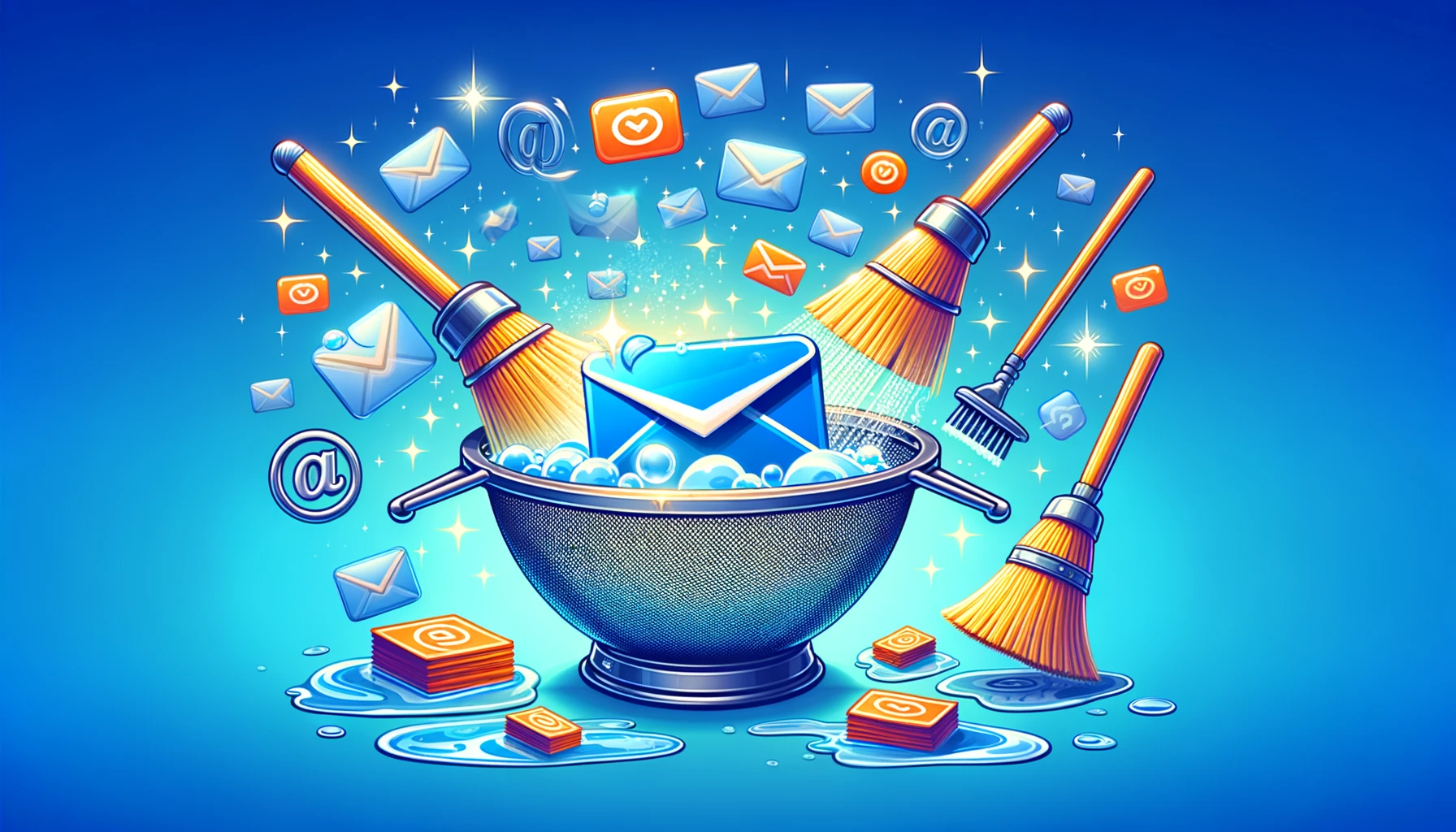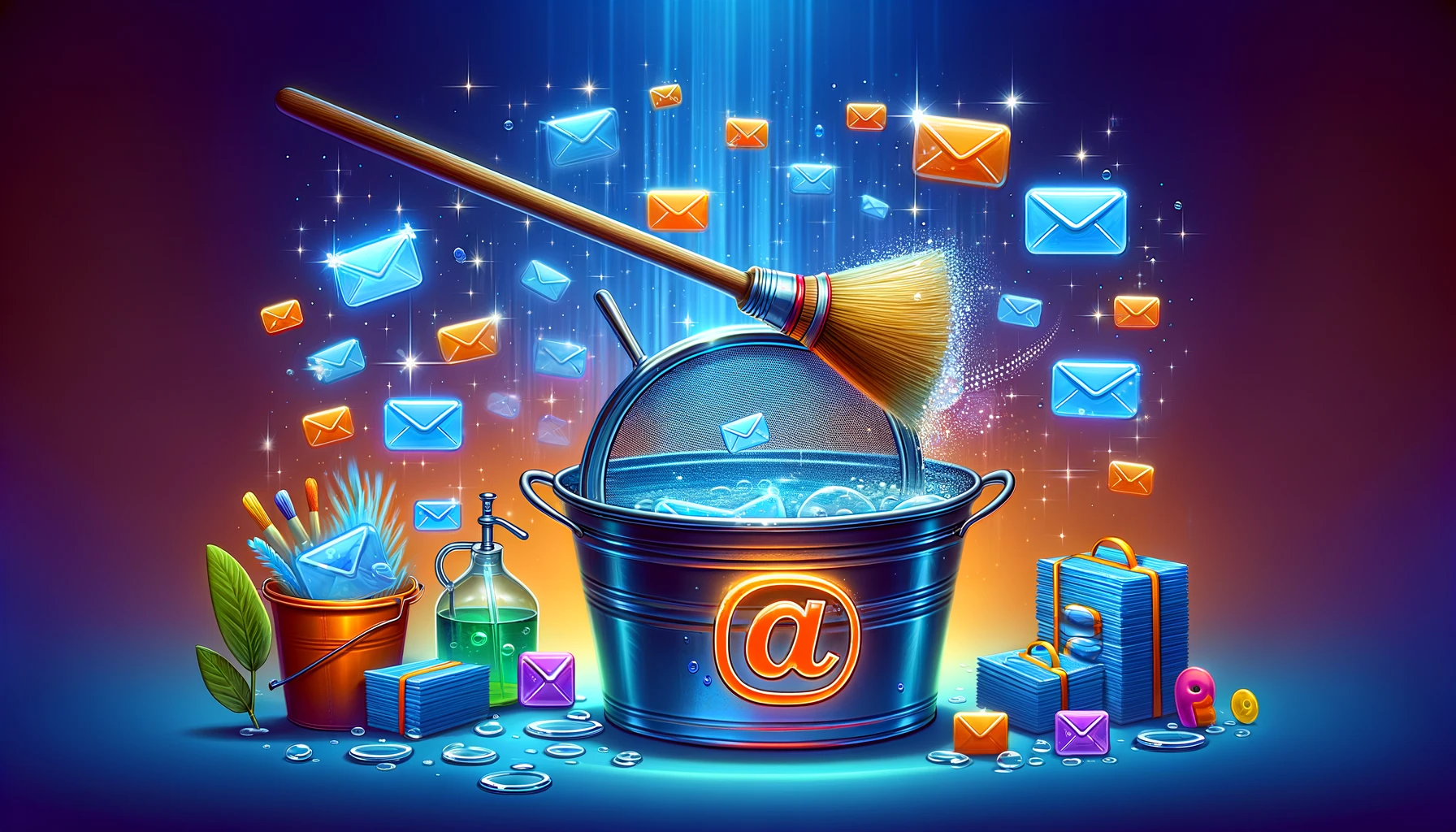Guide to Scrubbing Your Email List Clean for Effective Email Marketing
What is Email List Scrubbing and Why is it Important?
Understanding the Concept of Scrubbing Your Email List
Email list scrubbing is the process of removing unengaged subscribers from your mailing list to improve email deliverability and engagement rates. This essential practice ensures that your messages reach genuinely interested audiences.
Benefits of Regularly Cleaning Your Email List
Regularly cleaning your email list increases the likelihood that your emails land in the inbox, not the spam folder. It enhances your email marketing campaigns by ensuring you're sending emails to people who are interested in your content. This leads to higher open rates, better engagement, and more effective email marketing strategy overall. Clean lists also reduce the risk of being blacklisted by email service providers, maintaining your sender's reputation.
How Does Email Scrubbing Improve Email Campaign Performance?
Email scrubbing directly impacts your campaign's success by removing invalid email addresses and uninterested subscribers. This cleansing process boosts key email metrics such as open rates and click-through rates, ensuring your content reaches a more engaged and receptive audience. Improved deliverability and engagement from a clean list mean that your messages are more likely to convert, driving up the ROI of your email marketing efforts.
Best Practices for Email List Cleaning
How Often Should You Clean Your Email List?
It's best to clean your email list every three to six months. This frequency ensures you're regularly removing inactive subscribers and maintaining a high-quality mailing list. Timely cleaning helps in preserving your email deliverability and engagement rates.
Why Do You Need to Clean Your Email List?
Cleaning your email list is crucial for maintaining a healthy email marketing ecosystem. A clean list ensures high deliverability rates, reduces email bounces, and improves overall email performance. It helps in keeping your sender reputation intact, making sure your emails reach the inbox.
Tips for Effective Email List Cleaning
For effective email list cleaning, start by removing duplicate and invalid email addresses. Use an email verification service to identify and scrub these addresses. Regularly update your list by removing subscribers who haven't engaged with your emails over a specified period. Implementing a re-engagement campaign before scrubbing can help to awaken dormant subscribers. Lastly, always ensure compliance with data protection regulations when cleaning your list.
By adhering to these practices and understanding the importance of email list scrubbing, companies like Inagiffy can significantly improve their customer engagement and email campaign performance, making their email marketing efforts more efficient and impactful.
Tools and Services for Email List Scrubbing
Benefits of Using an Email List Cleaning Service
Using an email list cleaning service offers numerous advantages, such as improving email deliverability rates, reducing bounce rates, and enhancing the overall performance of email marketing campaigns. These services help ensure that your email list is free of invalid, duplicate, or inactive email addresses, thus maintaining the quality of your contact list. A clean list means your messages are more likely to reach the inbox, leading to better engagement and conversion rates.
Features to Look for in an Email Scrubbing Tool
When choosing an email scrubbing tool, look for features like real-time email verification, duplicate removal, spam trap detection, and detailed analytics. The tool should efficiently identify and remove invalid or risky email addresses, reducing bounce rates and protecting your sender reputation. Advanced segmentation capabilities and integration with your email marketing platform are also essential for streamlined list management and targeted campaign execution.
Segmentation and Maintenance of Email Lists
The Importance of Segmenting Your Email List
Segmenting your email list is crucial for delivering targeted and relevant content to your subscribers, which can significantly increase engagement rates, including opens and clicks. By categorizing subscribers based on criteria such as behavior, preferences, and purchase history, you can tailor your messaging to meet their specific needs and interests, leading to a more effective email marketing strategy and stronger customer relationships.
How to Keep Your Email List Clean and Engaged Through Segmentation
To maintain a clean and engaged email list, regularly segment your contacts and tailor your campaigns to match the interests and behaviors of each group. Remove inactive subscribers who haven't opened an email in a specified period to ensure your list remains high-quality. Regularly update your segments based on subscriber activity and feedback, and use segmentation to send re-engagement emails to try and reactivate dormant subscribers before deciding to remove them from your list.
Ensuring Email Deliverability and Avoiding Spam Folders
Common Issues Affecting Email Deliverability
Email deliverability can be hindered by several factors, including a high number of spam complaints, sending to invalid email addresses, and frequent email bounces. Poor list hygiene and a lack of engagement from recipients can also negatively impact your sender reputation with email providers like Gmail, making it more likely for your emails to be marked as spam.
Strategies to Improve Email Deliverability and Avoid Spam Filters
To improve email deliverability and avoid spam filters, prioritize maintaining a clean email list by regularly removing bounced and unengaged subscribers. Employ email verification to ensure the validity of email addresses on your list. Implement authentication protocols like SPF, DKIM, and DMARC to verify your emails' legitimacy. Lastly, encourage subscribers to whitelist your email address and provide clear unsubscribe options to reduce spam complaints. Tailoring your content to engage your audience effectively can also help in maintaining a positive sender reputation and ensuring your emails reach the inbox.
By incorporating these insights into your email marketing strategy, businesses like Inagiffy can significantly enhance their customer engagement efforts, ensuring their newsletters not only reach their intended audience but also drive meaningful interactions and conversions.
FAQs
How do you scrub a mailing list?
To scrub a mailing list, start by removing invalid, duplicate, and inactive email addresses using an email verification tool. Next, segment your list to identify and remove unengaged subscribers. Finally, employ re-engagement campaigns to reactivate dormant users, cleaning your list regularly to maintain its health and improve email deliverability.
What is list scrubbing?
List scrubbing is the process of cleaning your email list to ensure it contains only valid, engaged, and active subscribers. This practice involves removing invalid email addresses, duplicates, and unengaged subscribers to enhance the effectiveness of email marketing campaigns and protect your sender reputation.
What does scrub mean in email?
In email terminology, "scrub" refers to the act of cleaning and maintaining the hygiene of your email list. It involves various techniques to remove problematic addresses and unengaged subscribers, ensuring that every recipient on your list is likely to interact positively with your emails.
How do I scrub my email?
To scrub your email, use an email list cleaning service or software to identify and remove problematic addresses, such as duplicates, bounces, and spam traps. Regularly update your list by removing unengaged subscribers and validating new email addresses to keep your database healthy and your email campaigns effective.


Comments
Your comment has been submitted successfully!